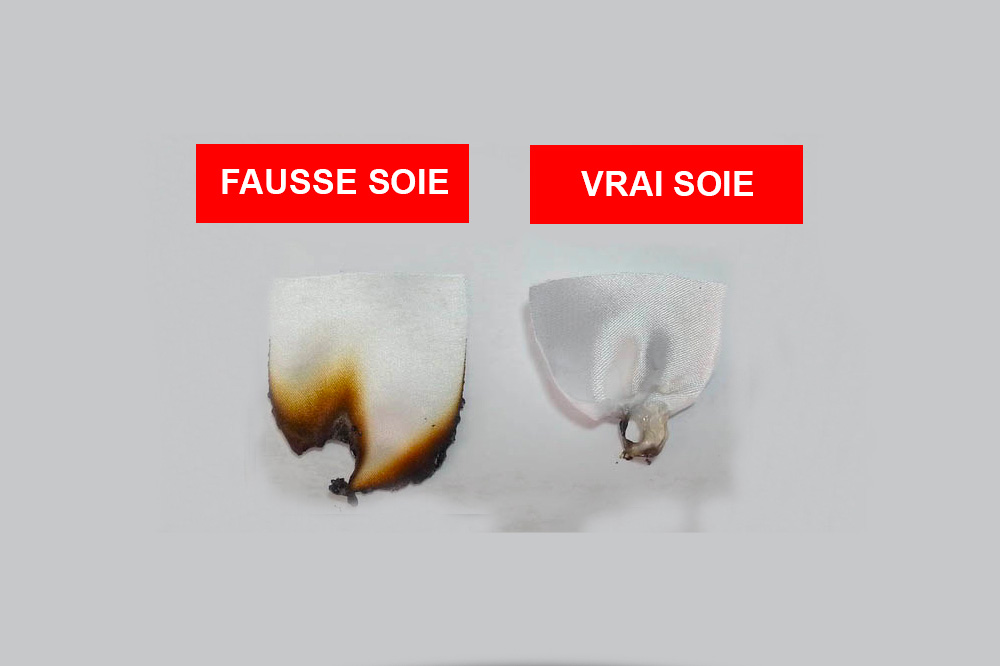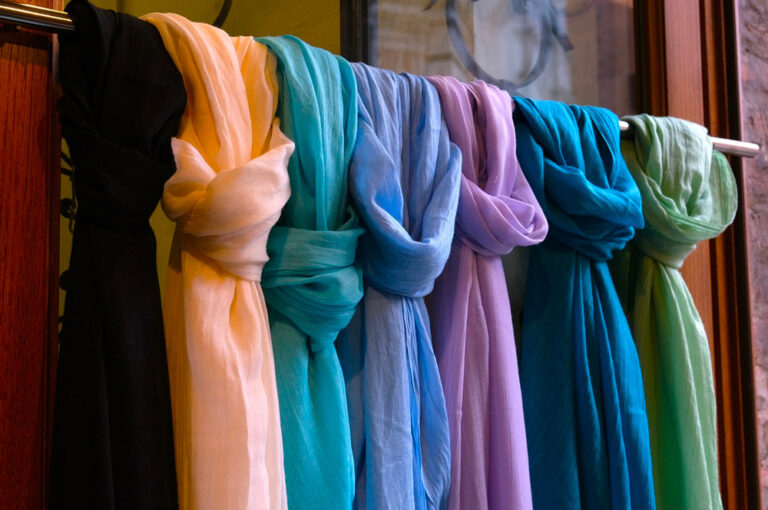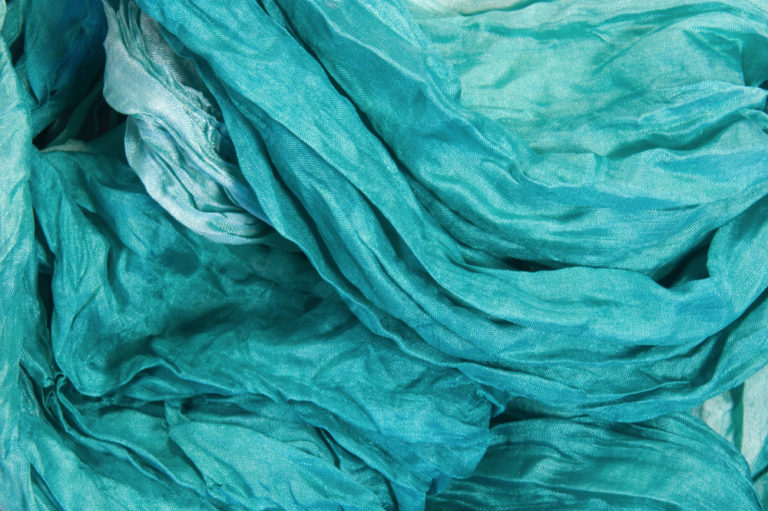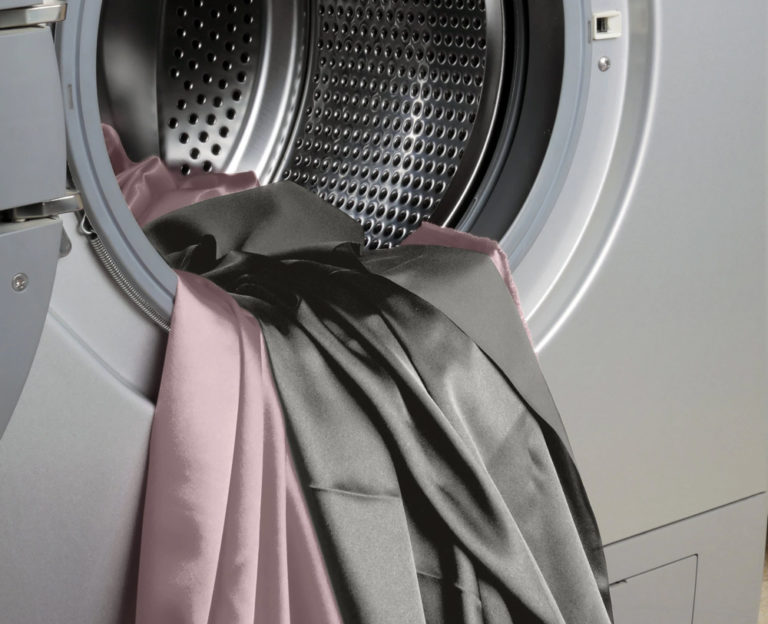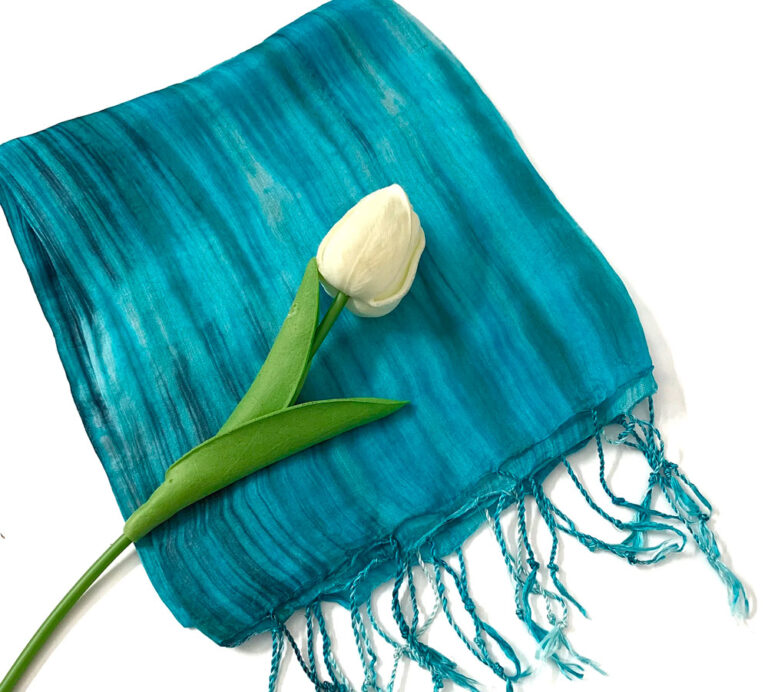False Silk vs. Real Silk | How to Tell the Difference
Real silk is an expensive fabric. The production of natural silk is a labor-intensive process, much of which is still done by hand. Increasingly, so-called silks are appearing on the market, but beware… there are many counterfeits among them. This explains the huge price differences between “silk” products.
The Price of Real Silk
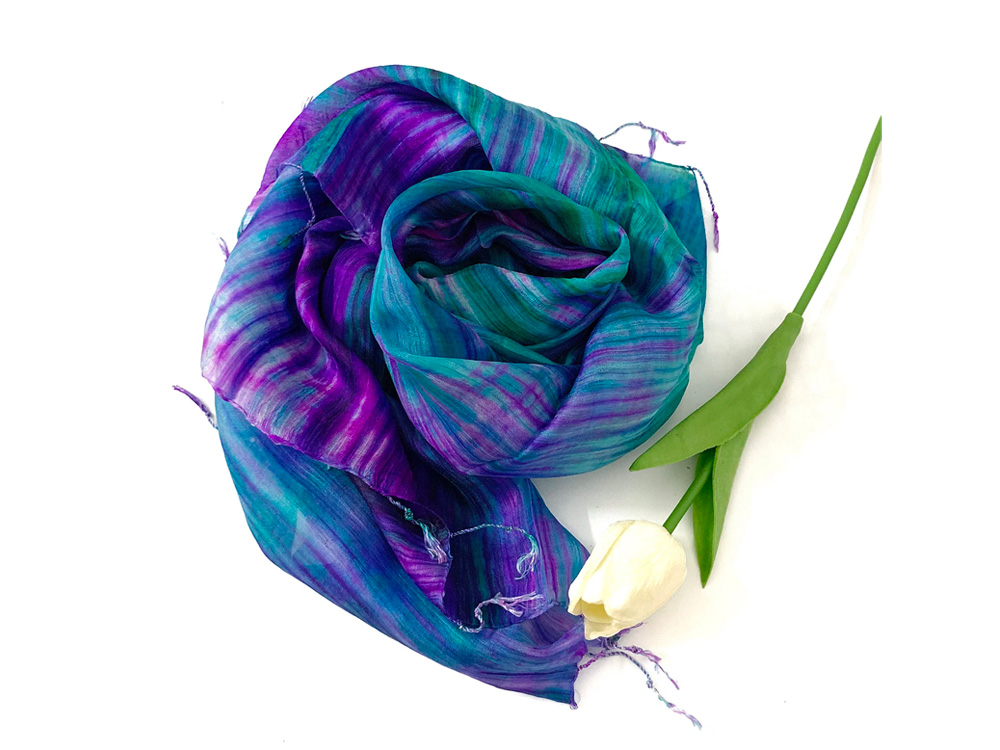
High-quality real silk can be recognized, among other things, by its price. Real silk is not cheap, and therefore cheap items cannot be made from it. The price is not, of course, an indication of the quality of the silk. In fact, cheap synthetic fabrics are deliberately priced high to pass them off as real silk.
In practice, this is often encountered in tourist markets. Real silk is at least 10 times more expensive than imitation silk. If you come across a “100% silk scarf” at a tourist market costing just a few euros, you can assume it is not real silk. The same goes for the “cashmere” label.
The Luster of Real Silk
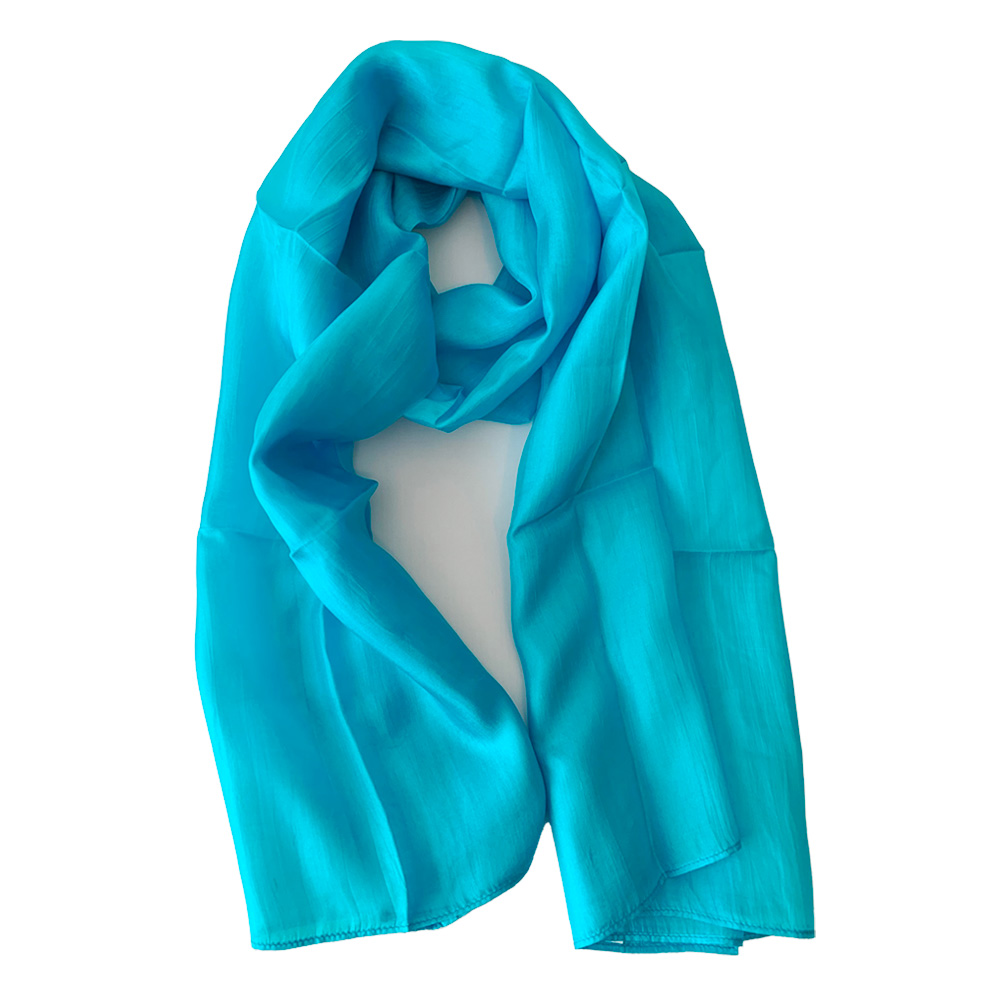
The natural sheen of real silk is easy to distinguish from the luster of cheap synthetic fabrics. Real silk has an iridescent appearance produced by the prism-like triangular structure of the silk fiber. This is particularly evident with our handmade silk scarves. As a result, silk can refract light at different angles, creating different colors.
There can also be a very fine natural sheen on silk fabric. This is a typical characteristic of real silk. Synthetic fabrics (faux silk) always shine towards white, regardless of the light angle.
Rub the Silk
One way to recognize silk is to rub it between your fingers and see if it feels warm. Only real silk is warm when rubbed with your hands, so if you don’t feel this warmth, it is probably fake silk.
The Ultimate Test: Burning the Silk
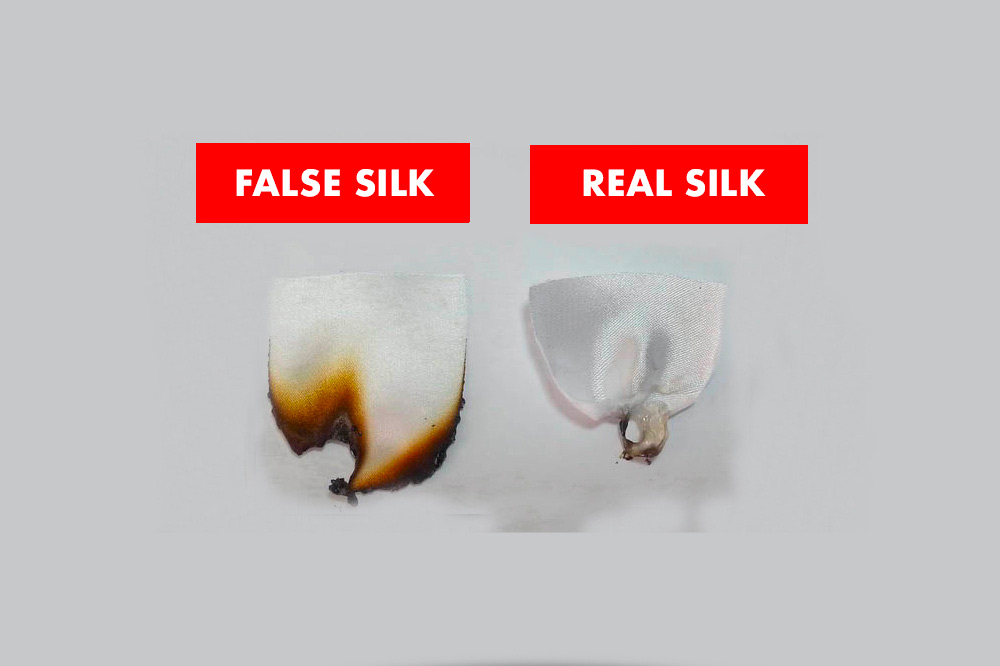
To be 100% sure it’s silk, just take a few threads from the fabric and burn them.
If it’s protein (silk/wool, cashmere, alpaca, etc.):
Burns slowly and shrinks or curls away from the flame. It does not stay lit once the flame is removed. Very little smoke is produced, but it smells like burning hair (wool) or feathers (silk). The ash is granular powder or a dark, brittle bead that is easily crushed.
If it’s cellulose (cotton/linen/hemp/rayon/bamboo):
Ignites quickly and burns. The smoke is white or light-colored and smells like burning paper or leaves.
If it’s Synthetic (nylon/polyester/acrylic):
Ignites and burns quickly and may continue to burn once the flame is removed – be careful. Fibers can shrink from flames, melt, and drip (DANGER), leaving a hard plastic-like bead.
Burning these substances produces black smoke and dangerous fumes. Nylon smells like plastic when burned, but it may also produce a celery-like odor; acrylics burn with a strong acidic chemical odor. Polyester smells slightly sweet, also with a chemical odor.

